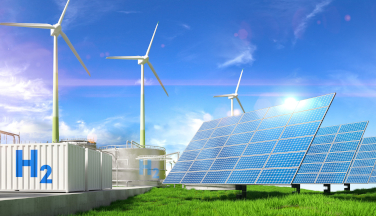Moving Hydrogen ICE Technology Forward
Cummins’ efforts to propel it into the market


The development of an alternative fuel for heavy duty applications involves a lot of moving parts and many different players. Energy producers and distributors, vehicle and engine OEMs, lubricant manufacturers, regulators and other industry participants have to work in collaboration on parallel tracks to turn the promise of a new zero-carbon fuel into reality. In an earlier article, we looked at how the industry is aligning around hydrogen fuel for internal combustion engines. Hydrogen has rapidly gained favor in the heavy-duty industry because the engine architecture required is very similar to that of diesel engines, and OEMs can more quickly adapt their vehicles, manufacturing facilities and processes.
“We’re finding that hydrogen engine technology is actually resonating very well with our customers,” says Jim Nebergall, Executive Director – Market Strategy at Cummins. “The equipment makers can integrate it more easily. They don’t have to completely redesign a vehicle or a piece of equipment for what is still an evolving market.”
Cummins is among the leading global engine suppliers that have made a substantial commitment to hydrogen-powered ICEs. “It’s really about providing zero-carbon power solutions that work in a wide range of commercial markets,” Jim says. “That’s on-highway, off-highway, agriculture, construction, marine – really anything that’s running on a diesel engine today, there’s no reason it can’t run on hydrogen.”
Determining the optimal engine technology is a major focus of Cummins’ R&D efforts. There are two primary engine technologies for hydrogen, Jim explains: port fuel, which involves introducing the fuel through an intake port, where it mixes with air before going into the cylinder; and direct injection, in which the fuel is injected directly into the cylinder. “Cummins is focused on direct inject hydrogen engines,” Jim says. “It’s more precise and allows us to get better performance, better efficiency, power and torque.”
While hydrogen fuel and engines are evolving toward commercial viability, fueling infrastructure needs to develop in parallel in order to drive widespread adoption. That effort got a boost recently when the Biden-Harris administration announced $7 billion in funding for seven regional hydrogen fuel hubs under the infrastructure act. Work has also begun on network and corridor planning to connect those hubs. “A lot of fleets, though, are not necessarily waiting for the public infrastructure,” Jim says. “They can do ‘behind the fence’ filling with hydrogen on site for their out-and-back routes. We expect to see demand for that kind of usage.”
The regulatory framework around hydrogen fuel is evolving, too. In the U.S., the EPA recognizes the potential for greenhouse gas reduction, which is its primary objective. The California Air Resources Board (CARB) is working collaboratively with OEMs to better understand the nitrogen oxide (NOx) emissions produced by the combustion of hydrogen, even though they are extremely low. Meanwhile in Europe, Hydrogen ICE meets the expected EU criteria for zero-emission vehicles (ZEV). Large markets such as China and India are expected to follow suit.
What role do lubricant producers like Chevron play in the advancement of hydrogen ICEs? Do hydrogen engines present any issues that affect lubricant formulations? “Hydrogen engines use a lot of air and run a bit cooler than diesel,” Jim says. “The combustion creates moisture, so there’s a higher likelihood of water in the crankcase, and we know that’s not good for oil. So, moisture mitigation is something we have to think about.” Hydrogen is also a very ignitable fuel, Jim points out, which raises the risk of low-speed pre-ignition (LSPI). This calls for lubricant manufacturers to strengthen LSPI protection in their formulations. In addition, hydrogen molecules are very small and run the risk of seeping from the pistons into the crankcase. Oil could potentially act as a sealant to help mitigate that risk.
There is a general consensus in the industry that the road to a carbon-free future is not dependent on one fuel technology “winning” over others. Rather, there will be a variety of options available. Earlier this year, for example, Cummins introduced a next-generation heavy-duty natural gas engine, and has initiatives across the spectrum of alternatives. “We are investing heavily in battery electric,” Jim says. “We're investing in hydrogen fuel cells in addition to hydrogen ICEs. We're looking at all these technologies because we think they're all needed. There will be a diversity of power solutions, because there's a very diverse set of applications.”
That diversity has implications for lubricant producers as well, as fleets move toward a mix of different engine technologies and fuel types. “Large fleet customers don’t like having too many choices,” Jim points out. “I can see value in having oils with common features that can be used in natural gas, diesel and hydrogen engines all at once. That would be valuable to the market.”
02/28/2024

























